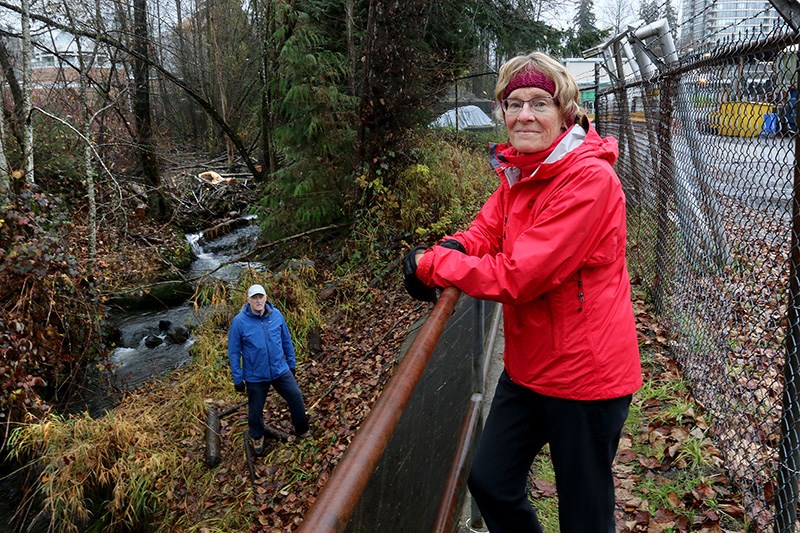A new management plan for beavers in Port Moody will make it easier for the industrious rodents to co-exist with other species like salmon — and especially humans — says an advocate for the creatures, Judy Taylor-Atkinson.
At its meeting Tuesday, council unanimously endorsed a comprehensive plan that has been in the works for several months and involved input from several groups and individuals representing the interests of beavers and salmon as well as local streamkeepers, and was prepared by JBL Environmental Services. The plan will be implemented with an annual budget of $45,000 and any unused funds will be put into a reserve to cover potential cost overruns in other years.
The need for such a plan was sparked after an attempt by city workers to relocate a family of beavers from Pigeon Creek in the Klahanie neighbourhood went awry and a young kit was drowned in a trap.
Taylor-Atkinson said the plan ensures such a mistake likely won’t happen again as it puts the emphasis on finding ways for the community to coexist with beavers.
“With wildlife, that’s what you want to do,” she said, adding beavers that take up residence in Port Moody’s waterways will be able do what beavers do while the city monitors their activity with an eye to mitigating any danger their dams and dietary requirements might pose to the city’s infrastructure or fish habitat.
Some of those mitigation steps have already been installed in Suter Brook Creek, behind Port Moody’s works yard, where the remaining members of the beaver family settled last year after they were evicted from Pigeon Creek. Those measures include the installation of a pond leveller, a large flexible pipe that is submerged in the beaver pond and carries excess water beyond their dam so surrounding property doesn’t flood while the level of the pond remains high enough to allow the beavers to access their den. In October, the leveller was supplemented with a modular fish lift to make it easier for fish to get past the dam.
As well, several trees and some vegetation have been protected with wire mesh while others are left to the beavers to chop down or eat as they require.
Taylor-Atkinson said the end result may not look pretty, with chopped and gnawed trees scattered across the pond’s banks, but that’s the point.
“The messier a watershed is, the healthier it is,” she said.
As a result of these efforts, Taylor-Atkinson said the beaver family has thrived. It now numbers at least five but could be as large as seven. So far, it’s still the only known beaver colony in the city.
As well, the watershed has benefitted, Taylor-Atkinson said. Chum salmon heading upstream to spawn have been spotted in the fish ladder and a heron has made the pond a regular stop on its rounds looking for tasty morsels that might happen along.
But Ruth Foster of the Mossom Creek Hatchery on the city's north shore told council she’s not convinced the dramatic changes to the creek’s dynamics are good the salmon.
“We fear many years of work to restore Suter Brook for fish may be in jeopardy,” she said.
That’s why education is also a major component of the city’s new management plan, Taylor-Atkinson said.
“Beavers are a public relations challenge,” she said.
While some interpretive signage has been installed at the Suter Brook beaver pond to explain what is happening to the habitat, Taylor-Atkinson said that will be improved and possibly bolstered with guided interpretive walks.
“Education is always the most important plan for beavers,” she said.



